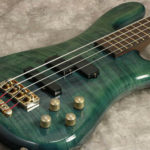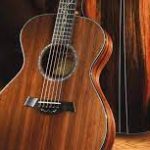
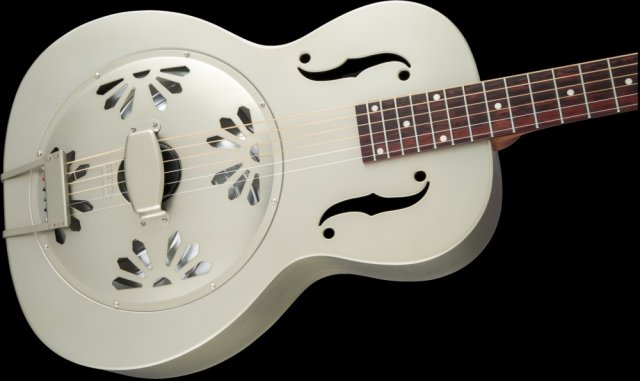
Gretsch G9201 Honey Dipper
Gretsch excels when it comes to bringing back the past through musical instruments, whether electric or acoustic guitars, or – in today’s case – resonators. Their popular G9201 Honey Dipper – part of the brand’s Roots Collection – takes big inspiration from the excellent resonators of the 1920s, although the build and hardware certainly passes modern standards.
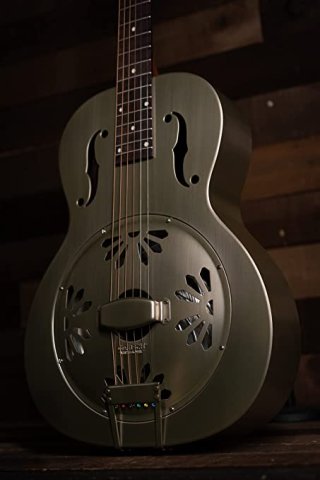
The guitar combines a vintage sound with modern playability, all in an affordable package.
The guitar not only sounds old but looks old, thanks to its vintage cosmetic details.
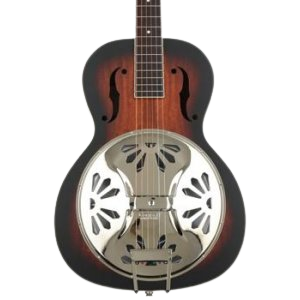
Body
Gretsch specializes in retro, and the design of the G9201 Honey Dipper doesn’t change this – it just oozes vintage, from the weathered finish of the bell brass body to the glitzy 1930s pearloid headstock complete with the vintage Gretsch logo. The body itself is quite small, and features a traditional non-cutaway design with two F-holes in the upper bout.
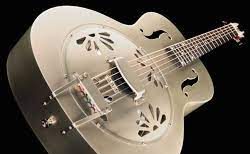
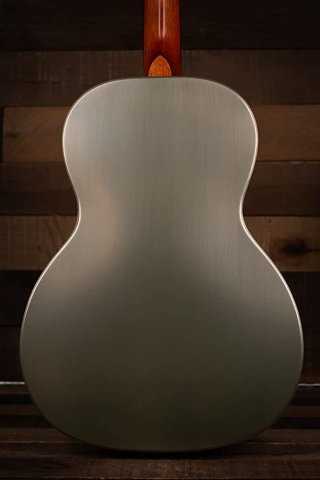
At eight pounds, seven ounces, the Honey Dipper is on the hefty side, but it sits nicely on your lap and feels well-balanced between its wooden neck and metal body. Designed to be fretted conventionally, it’s built with a rather large, medium-V-shape neck (instead of square, as on instruments built to be played exclusively in the bottleneck style), a profile that vintage aficionados will find inviting
While the body is metal, which gives it a considerably hefty overall weight, the neck is made from solid mahogany and features a rounded V shape, on which the padauk fretboard sits, sporting 19 jumbo frets in total (12 in the clear) and a nut width of 1.75”.

It’s super slick to play, with its honey-stained semi-gloss finish. The overall craftsmanship and finish felt very good for the affordable mid-range price – quite ready to go out of the box, even if the action was a little on the high side. Open-geared Grover Sta-Tite tuners with black buttons complete the antique effect, as does a lightly distressed finish treatment on the body.
Hardware
What’s lying underneath that shiny coverplate? The G9201 Honey Dipper features Gretsch’s Ampli-Sonic biscuit cone and bridge, handspun in Eastern Europe. But, unlike some others in the Roots Collection, this Gretsch resonator relies completely on the cone for its projection – no electronics feature.

The headstock, which has a 1930s paddle-shaped silhouette, is capped with a layer of pearloid, a matching truss-rod cover, and an old-school Gretsch logo.
The guitar’s 19 jumbo frets are smoothly crowned and polished, without any jaggedness at their edges, and the bone nut is cleanly notched. On the neck, a honey-stained semi-gloss finish is smoothly applied a
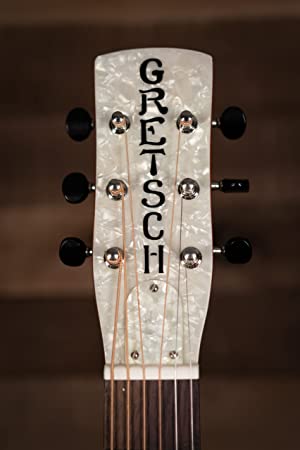
The Honey Dipper has a hard maple bridge/saddle under the cone, as well as a set of open-geared Grover Sta-Tite die-cast tuners with black buttons, a quality bone nut, and a light set of D’Addario strings.
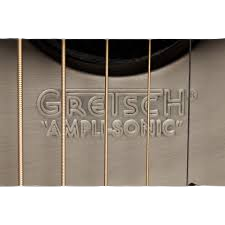
Sound
While it looks and feels great, the highlight of the Honey Dipper is the sound. It really does deliver that haunting metallic tone that’s perfect for Delta blues, among many other styles. Perhaps Gretsch put it the best when they say it gives ‘a sound like raindrops beating on a rusty pump house roof’. We’ll happily agree with that! The sustain lingers nicely, while it offers a strong projection, with no real need for electronics – it cuts through any acoustic mix.

The Honey Dipper has an exciting sound, loud and lively, with an impressive natural reverb. Each note is full of color and information. Though the instrument’s voice lends authenticity to playing in the mold of original Delta Blues practitioners like Son House or Bukka White, it also sounds great for fare not ordinarily associated with the resonator. I played Thelonious Monk’s “Ugly Beauty,” in dropped-D tuning, and the Honey Dipper added unexpected tonal shadings to this idiosyncratic waltz.
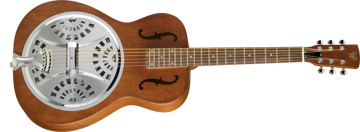
Gretsch’s G9201 Honey Dipper might not have the mojo of a 1930s National, but it offers an excellent approximation, with a classic sound and smart appearance to match. The guitar would be a good choice for a player looking to branch out into Delta blues territory, or one who wants to casually explore the timbral possibilities in a resonator instrument—for only a minimal cash outlay.
Guitar & Gear Articles




